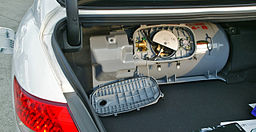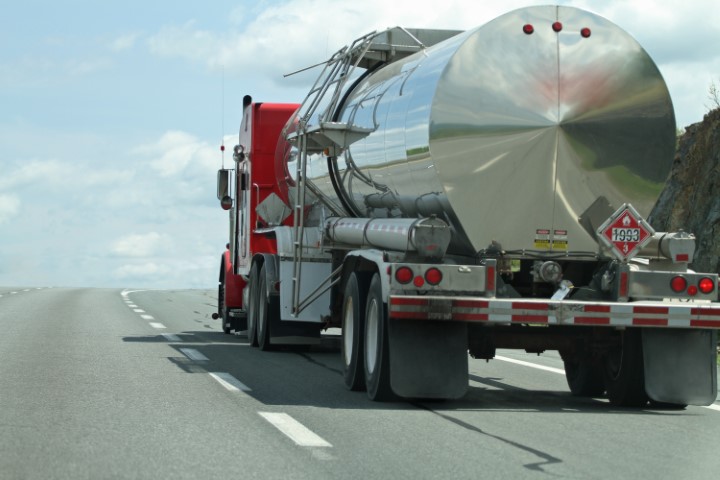LPG Vehicles - Flex Fuel Vehicles Get More Flexible
Did you know that virtually the same kind of “propane” gas they buy in the little cylinders at the grocery store for their grill can be used to run...
4 min read
Bell Performance : Nov 21 2013
With the way the national energy picture has shifted in the last 10 years, fleets now have more options to consider for fuel rather than just conventional diesel and gasoline.
The biggest shift in the last decade has been the abundant availability of natural gas and similar gases like CMG and LPG (liquefied propane gas).
Consumers worldwide have been running vehicles and machines on propane and natural gas for years, with the United States lagging somewhat behind them in its progress toward accepting and adopting those fuels on a widespread scale domestically.
As the price for diesel and gasoline stays well above three dollars per gallon with no sign of coming down anytime in the near distant future, please and businesses are seriously considering options they would never have thought of a decade ago. Such as converting fleets from gasoline and diesel to autogas: compressed propane fuel used to power vehicles.
As we consider case studies of fleets that have successfully made the transition, there are several considerations that we can take away from their experience to help inform companies here closer to home on making this transition if they deem it to be right for them. So let's delve into some of those and see if we can remove anything useful.
The biggest cost in an autogas conversion is paying for the hardware and conversion labor of each vehicle. This conversion involves several steps designed to change the engine from one that can only burn liquid fuels like gasoline and diesel to one that can operate in the same fashion on compressed gases. Most conversions turn these into "bi-fuel" vehicles that can run on both gaseous and liquid fuels. Besides the additional fuel tank and lines to be installed, other items to be installed include new injectors, filler point, fuel switch & gauge, gas vaporizer, and electronic control unit.
The upfront cost for these conversions can range anywhere from $3000-$6000 or a little bit more. Given these extra costs, what's in it for the fleet to entice them to make this change? After all, we know that fleets and businesses are tied to their bottom line. If something is not going to impact their bottom line or if something can't be shown to offer a tangible value, then businesses aren't likely to adopt it.
When considering the return on investment (ROI), there are tangible and intangible benefits for the business. Non-tangible ROI elements can include things like an improved public image for a business that can show that it is more environmentally friendly. But in the end, it is the tangible ROI factors that are most important - the fuel that's used, the cost of the field, and the mileage that these fleets get on that fuel.
Typical propane tanks installed on trucks should enable them to get 500 to 800 miles per tank of compressed gas. Compressed gas costs less per gallon than gasoline or diesel does and the fleet or business also gets a tax credit depending on where they operate. So the fleet may get fewer miles per gallon of gas but if they factor in the cost of the fuel, they end up saving money over using conventional gasoline or diesel. Fleets that have converted to autogas have realized savings per vehicle upwards of $1000 per year. They can also calculate that when their fuel savings are compared to the cost of conversion, many of these businesses will regain their expenditure in less than 18 months. That's even without the benefit of tax credits. Overall, this path to ROI for autogas conversion is an attractive proposition for many businesses and fleets.
If you're going to have propane on-site, it stands to reason you have to have propane gas storage tanks installed as well. Many propane providers will partner with businesses to pay for or share in the cost of tank installation if it means that they get to supply the gas themselves.
Some drivers in fleets considering this change are concerned with a potential loss of space if special tanks have to be installed on their vehicles in work areas like the truck bed. But many fleets that have made the transition report that their drivers, while understandably apprehensive at the start, soon get used to the new tanks and do not report any long-term dissatisfaction issues. Installing a propane tank in a pickup bed or truck box can change the center of gravity on the truck, allowing for greater tongue weight with the trailers that they may have to tell. It is also rare for a driver of a converted vehicle to report any loss of horsepower with propane compared to the regular gasoline engine.
One unexpected benefit of converting from liquid fuel to propane is a reduction in fuel theft. Fuel theft is virtually eliminated because employees cannot fuel up a personal vehicle from any of the tanks that the business may have installed. This theft problem is bigger than one might think unless you are in an industry where it happens. Businesses in those industries know exactly what we are talking about.
Burning propane over diesel or gasoline does lead to a cleaner engine, and this typically means longer engine life for vehicles. Gasoline pickup trucks that are converted to autogas can expect to get 300,000 miles or more out of the engines. At the same time, it does mean you have to monitor service intervals for things like oil changes. Autogas fleet managers find that propane does not lead the dark-colored soot in the oil that traditional gasoline or diesel does. And that means it is harder to visually monitor when the oil needs changing. But this is easy to adjust to, with autogas fleet managers tending to default to an oil change interval of about every 5000 miles.
This summary of issues is by no means a comprehensive listing of all the benefits or challenges involved in the conversion from liquid petroleum fuel to compressed gas fuels. We would be very interested in hearing from any fleets and businesses that have made the change themselves.
How has your experience been?

Did you know that virtually the same kind of “propane” gas they buy in the little cylinders at the grocery store for their grill can be used to run...
The sustainability drum has a lot more businesses marching to it these days. The concept of "sustainability" is all about encouraging business...

In 2006, the United States Environmental Protection Agency fully implemented regulations mandating the use of ultra-low sulfur diesel (ULSD) fuel for...